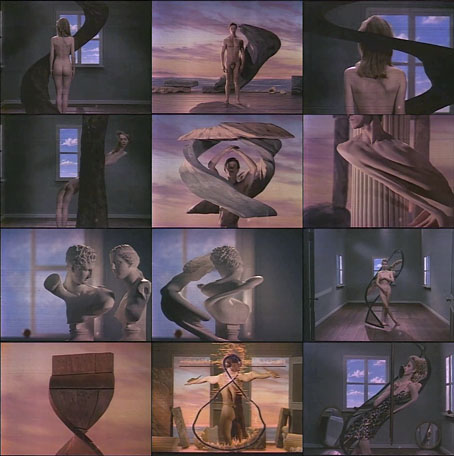This post ought to have followed the one about Tango since it concerns another experimental film by Zbigniew Rybczynski. The Fourth Dimension was made in 1988 and like many of the director’s films uses a single effect to create striking results. In this case the effect involves photographing people and objects one narrow line at a time. When the lines are combined then shifted slightly the objects seem to bend and twist like melting plastic. This is the kind of semi-analogue technique which has now been made redundant by computer animation but Rybczynski gives his compositions a quasi-Surrealist quality, reinforced by the Magritte-like windows in some of the rooms.
Previously on { feuilleton }
• Tango


stunning. Even after your explanation, I cannot seem to picture how this effect is created. Warped glass?
Rybczynski is quoted here: http://www.zbigvision.com/The4Dim.html
Basically he filmed each episode onto video, with the actors or the props rotating slowly on a turntable. Then he put together a jerry-rigged computer system with lots of memory that could hold multiple frames in memory, and assembled *new* frames — in which line 1 of a given frame would be from original frame t1, line 2 would be from frame t1-1, line 3 would be from t1-2, and so on.
In the *next* synthesised frame, line 1 is from t1+1, line 2 is from t1, line 3 is from t1-1… So the motion during the episode — actors and props rotating, passing one in front of the other — is rotated into the vertical axis of each frame.
These days the cool kids are calling it “chronotopic anamorphosis”.
Rybczynski meets Muybridge!
Would it be forward of me to suggest Daniel Crooks’ video work as a topic for a future Feuilleton?
http://www.youtube.com/watch?v=sCip5vBIYMo&feature=related